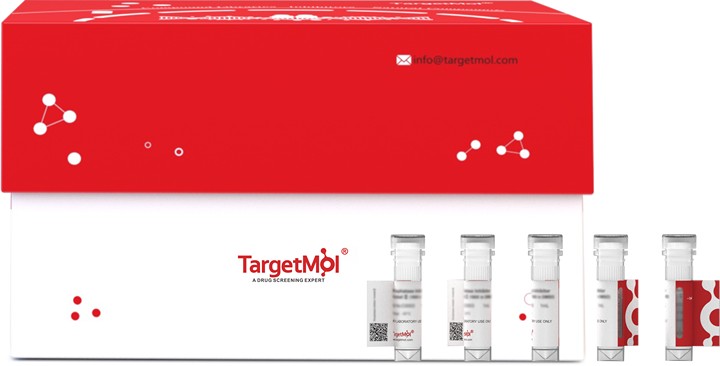Shopping Cart
- Remove All
 Your shopping cart is currently empty
Your shopping cart is currently empty

Sialic acids are components of carbohydrate chains of glycoconjugates and are involved in cell-cell recognition and cell-pathogen interactions. That protein has no CMP-N-acetylneuraminate monooxygenase activity and is not able to convert CMP-N-acetylneuraminic acid (CMP-Neu5Ac) into its hydroxylated derivative CMP-N-glycolylneuraminic acid (CMP-Neu5Gc), a sialic acid abundantly expressed at the surface of many cells in vertebrates. However, it may play a role in Wnt signaling.

| Pack Size | Price | Availability | Quantity |
|---|---|---|---|
| 20 μg | $360 | 20 days | |
| 100 μg | $745 | 20 days | |
| 1 mg | $2,530 | 20 days |
| Biological Activity | Activity has not been tested. It is theoretically active, but we cannot guarantee it. If you require protein activity, we recommend choosing the eukaryotic expression version first. |
| Description | Sialic acids are components of carbohydrate chains of glycoconjugates and are involved in cell-cell recognition and cell-pathogen interactions. That protein has no CMP-N-acetylneuraminate monooxygenase activity and is not able to convert CMP-N-acetylneuraminic acid (CMP-Neu5Ac) into its hydroxylated derivative CMP-N-glycolylneuraminic acid (CMP-Neu5Gc), a sialic acid abundantly expressed at the surface of many cells in vertebrates. However, it may play a role in Wnt signaling. |
| Species | Human |
| Expression System | E. coli |
| Tag | N-10xHis, C-Myc |
| Accession Number | Q9Y471 |
| Synonyms | Inactive cytidine monophosphate-N-acetylneuraminic acid hydroxylase,Cytidine monophosphate-N-acetylneuraminic acid hydroxylase pseudogene,CMP-NeuAc hydroxylase-like protein,CMAHP,CMAH |
| Amino Acid | MDENNGLLLLELNPPNPWDLQPRSPEELAFGEVQITYLTHACMDLKLGDKRMVFDPWLIGPAFARGWWLLHEPPSDWLERLCQADLIYISHLHSDHLSYPTLKKLAGRRPDIPIYVGNTERPVFWNLNQSGVQLTNINVVPFGIWQQVDKNLRFMILMDGVHPEMDTCIIVEYKGHKILNIVDCTRPNGGRLPMKVALMMSDFAGGASGFPMTFSGGKFTEEWKAQFIKTERKKLLNYKARLVKNLQPRIYCPFAGYFVESHPSDKYIKETNTKNDPNELNNLIKKNSDVITWTPRPGATLDLGRMLKDRTDSKGIIEPPEGTKIYKDSWDFEPYLEILNAALGDEIFLHSSWIKEYFTWAGFKDYNLVVRMIETDEDFNPFPGGYDYLVDFLDLSFPKERPQREHPYEEIHSRVDVIRHVVKNGLLWDELYIGFQTRLQRDPDIYHHLFWNHFQIKLPLTPPNWKSFLMCCEQNGPVILQFSTERTNEPNRNKFSVENKA |
| Construction | 1-501 aa |
| Protein Purity | > 90% as determined by SDS-PAGE. |
| Molecular Weight | 63.4 kDa (predicted) |
| Endotoxin | < 1.0 EU/μg of the protein as determined by the LAL method. |
| Formulation | If the delivery form is liquid, the default storage buffer is Tris/PBS-based buffer, 5%-50% glycerol. If the delivery form is lyophilized powder, the buffer before lyophilization is Tris/PBS-based buffer, 6% Trehalose, pH 8.0. |
| Reconstitution | Reconstitute the lyophilized protein in sterile deionized water. The product concentration should not be less than 100 μg/mL. Before opening, centrifuge the tube to collect powder at the bottom. After adding the reconstitution buffer, avoid vortexing or pipetting for mixing. |
| Stability & Storage | Lyophilized powders can be stably stored for over 12 months, while liquid products can be stored for 6-12 months at -80°C. For reconstituted protein solutions, the solution can be stored at -20°C to -80°C for at least 3 months. Please avoid multiple freeze-thaw cycles and store products in aliquots. |
| Shipping | In general, Lyophilized powders are shipping with blue ice. Solutions are shipping with dry ice. |
| Research Background | Sialic acids are components of carbohydrate chains of glycoconjugates and are involved in cell-cell recognition and cell-pathogen interactions. That protein has no CMP-N-acetylneuraminate monooxygenase activity and is not able to convert CMP-N-acetylneuraminic acid (CMP-Neu5Ac) into its hydroxylated derivative CMP-N-glycolylneuraminic acid (CMP-Neu5Gc), a sialic acid abundantly expressed at the surface of many cells in vertebrates. However, it may play a role in Wnt signaling. |

Copyright © 2015-2025 TargetMol Chemicals Inc. All Rights Reserved.